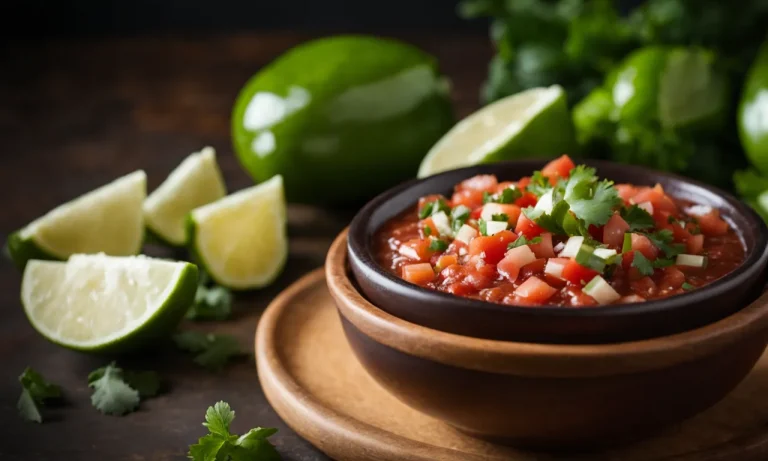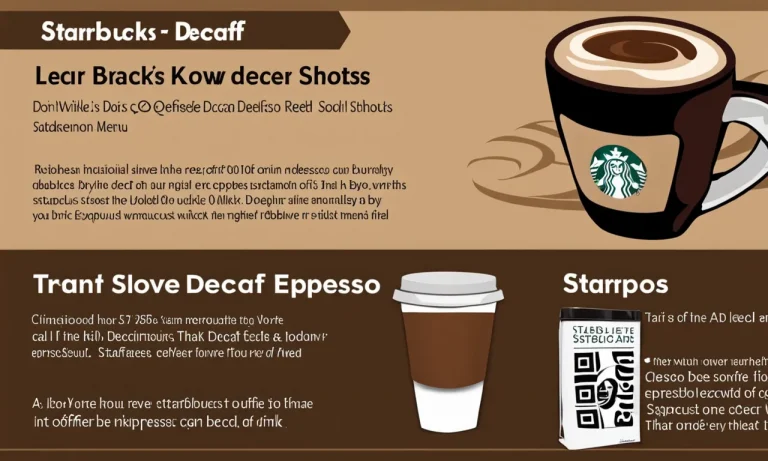Working in a restaurant can be a high-paced, demanding job. Having the right footwear is essential for staying comfortable and avoiding slips and falls on wet or greasy floors. If you’re short on time, here’s a quick answer to your question: Crocs can be non-slip for restaurants if you purchase a style specifically designed to be slip-resistant and replace worn treads regularly.
In this comprehensive article, we’ll take an in-depth look at Crocs and their slip-resistance to help you decide if they are suitable footwear for restaurant work. We’ll cover the slip-resistant features of Crocs made for restaurants, how well they perform compared to shoes like clogs, how to maintain their non-slip tread, whether Crocs comply with restaurant safety standards, and recommendations from restaurant workers on Crocs.
Types of Crocs Made for Restaurants
Crocs Bistro Clog
Crocs Bistro Clog is one of the most popular types of Crocs made specifically for restaurant workers. These clogs are designed with features that prioritize comfort and safety in the fast-paced environment of a restaurant.
They have a closed-toe design to protect your feet from spills and falling objects, and a thick, slip-resistant sole that provides excellent traction on wet and oily surfaces. The Crocs Bistro Clog also has an enclosed heel to secure your foot in place and prevent slips or accidents.
It is made from Crocs’ proprietary Croslite material, which is lightweight, durable, and easy to clean. These clogs are available in various colors and sizes, ensuring you can find the perfect fit for your needs.
Crocs Specialist II Clog
Another popular option for restaurant workers is the Crocs Specialist II Clog. These clogs are specifically designed for those who spend long hours on their feet, providing maximum comfort and support.
The Specialist II Clog features a roomy fit and a thicker metatarsal area to reduce pressure on your feet. It also has a slip-resistant outsole that meets industry standards for wet and oily surfaces. The enclosed heel and closed-toe design provide added protection, making them suitable for demanding restaurant environments.
The Specialist II Clog is also made from Crocs’ Croslite material, ensuring durability and easy maintenance.
Key Slip-Resistant Features
Both the Crocs Bistro Clog and the Crocs Specialist II Clog come with key slip-resistant features that make them ideal for restaurant workers. The slip-resistant outsole, made from a special rubber compound, provides excellent traction on slippery surfaces, reducing the risk of slips and falls.
The closed-toe design and enclosed heel offer additional protection, preventing accidental spills or injuries. The Croslite material used in these Crocs is also water-resistant and easy to clean, allowing you to maintain a hygienic and professional appearance throughout your shift.
These slip-resistant features are essential for ensuring the safety and well-being of restaurant workers in busy and potentially hazardous environments.
If you’re looking for reliable and comfortable footwear for your work in the restaurant industry, Crocs Bistro Clog and Crocs Specialist II Clog are excellent options to consider. Their slip-resistant features, combined with their comfort and durability, make them suitable for the demands of the job.
Remember to always prioritize safety and choose footwear that meets industry standards. For more information on slip-resistant footwear and industry regulations, you can refer to websites such as OSHA (Occupational Safety and Health Administration) and NSF International (National Sanitation Foundation International).
How Crocs Compare to Other Restaurant Shoes
Vs. Clogs
When it comes to choosing the right footwear for working in a restaurant, clogs are often a popular choice. However, Crocs have gained significant traction in the industry as well. So, how do they compare?
Clogs are known for their slip-on design and comfortable fit, making them a favorite among many restaurant workers. They typically have a closed toe and a back strap for added support. On the other hand, Crocs also offer slip-on convenience but come with a more casual and lightweight design.
They are made from a unique material called Croslite, which provides excellent cushioning and arch support.
While both clogs and Crocs are suitable for restaurant environments, Crocs have an edge when it comes to comfort. The Croslite material used in Crocs molds to the shape of your feet, providing a custom-fit experience.
Additionally, Crocs are known for their breathability, which can be particularly advantageous during long shifts in a hot kitchen.
Vs. Non-Slip Shoes
Non-slip shoes are a necessity for anyone working in a restaurant, as they provide traction and help prevent accidents in slippery conditions. Many restaurant workers wonder if Crocs can offer the same level of slip resistance as dedicated non-slip shoes.
While Crocs are not specifically designed as non-slip shoes, they do offer some benefits in terms of slip resistance. The unique Croslite material used in Crocs provides a good grip on most surfaces, reducing the risk of slipping.
However, it is important to note that the level of slip resistance may not be as high as that of dedicated non-slip shoes.
For those working in high-risk areas, such as busy kitchens or areas prone to spills, it is recommended to opt for shoes specifically designed for non-slip functionality. These shoes often feature specialized rubber outsoles with enhanced traction patterns, providing maximum grip on wet and oily surfaces.
Ultimately, the choice between Crocs and non-slip shoes depends on the specific needs and preferences of the individual. Some restaurant workers may find that Crocs offer sufficient slip resistance for their work environment, while others may prefer the added reassurance of dedicated non-slip shoes.
Maintaining the Non-Slip Tread on Crocs
Inspecting Wear
One of the key factors in maintaining the non-slip tread on Crocs is regularly inspecting them for wear and tear. Over time, the tread on the bottom of the shoes can become worn down, reducing its effectiveness in providing traction.
It is important to visually inspect the tread pattern to ensure it is still intact and not significantly worn down. This can be done by looking closely at the bottom of the shoes and checking for any signs of wear, such as smooth patches or uneven tread patterns.
Additionally, it is recommended to test the shoes on a non-slip surface to gauge their effectiveness. This can be done by walking on a wet or slippery surface and paying attention to any slippage or lack of grip.
If the shoes are not providing the necessary traction, it may be time to consider replacing the treads.
Replacing Treads
If the non-slip tread on Crocs is worn down or not providing the desired level of traction, it is possible to replace the treads. There are various options available for purchasing replacement treads, including both official Crocs replacements and third-party alternatives.
When replacing the treads, it is important to follow the manufacturer’s instructions or consult a professional if needed. The process typically involves removing the old treads and attaching the new ones securely to the bottom of the shoes.
It is crucial to ensure that the replacement treads are compatible with the specific model of Crocs being used.
It is worth noting that replacing the treads may require some skill and patience, so it may be best to seek assistance if unsure. Additionally, it is recommended to periodically check the replaced treads for wear and tear to ensure they continue to provide the necessary non-slip properties.
For more information on maintaining non-slip shoes and selecting the right replacements, websites like www.crocs.com and www.slipresistant.net can be valuable resources.
Do Crocs Meet Restaurant Safety Standards?
When it comes to working in a restaurant, safety should always be a top priority. Slip and fall accidents are all too common in the food service industry, and appropriate footwear can play a crucial role in preventing such accidents.
Many individuals wonder if Crocs, the popular rubber clogs, meet the safety standards required in restaurant settings. Let’s take a closer look.
U.S. Standards
In the United States, the Occupational Safety and Health Administration (OSHA) sets guidelines to ensure workplace safety. While OSHA does not specifically mention Crocs, they do require that footwear in restaurants provide adequate slip resistance.
Crocs, with their non-slip soles, generally meet these requirements. However, it’s important to note that not all Crocs models are designed with the same level of slip resistance. It is crucial for restaurant employees to choose Crocs that are specifically designed for slip resistance to ensure maximum safety.
International Standards
Restaurant safety standards may vary in different countries. For example, the European Union has specific regulations known as the EN ISO 20347:2012 standard, which includes slip resistance requirements for occupational footwear.
Crocs offers models that meet this standard, providing reassurance for those working in European restaurants. Similarly, other countries may have their own safety standards, and it is important to ensure that the Crocs being worn meet these requirements.
It’s worth mentioning that while Crocs can provide a certain level of slip resistance, it’s always a good idea to take additional precautions. Keeping floors clean and dry, using non-slip floor mats, and practicing good work habits can further reduce the risk of accidents in the restaurant environment.
Restaurant Worker Experiences with Crocs
When it comes to working in a restaurant, comfort and safety are of utmost importance. Many restaurant workers have turned to Crocs as their go-to footwear option. Let’s take a closer look at their experiences with Crocs in terms of comfort, durability, and any potential downsides.
Comfort
One of the main reasons restaurant workers choose Crocs is for their exceptional comfort. The cushioned footbed and supportive arch make long hours of standing and walking more bearable. The lightweight design and roomy fit also provide ample space for the feet to breathe, reducing the chances of discomfort or blisters.
Many workers comment on how wearing Crocs feels like walking on clouds, allowing them to focus on their tasks without foot pain or fatigue.
Durability
When it comes to durability, Crocs have proven to be reliable work shoes for restaurant workers. The slip-resistant soles provide excellent traction on wet and greasy surfaces, reducing the risk of slips and falls.
Additionally, Crocs are made from a durable material that can withstand the demands of a fast-paced restaurant environment. They are easy to clean and maintain, ensuring that they can withstand spills and stains without losing their shape or color.
Downsides
While Crocs have many advantages, it is important to consider potential downsides as well. Some restaurant workers have reported that Crocs can be slippery on certain types of floors, especially when they become worn out.
It is crucial to regularly inspect the soles and replace them if necessary to maintain their non-slip properties. Additionally, Crocs may not provide the same level of protection as traditional work shoes, particularly in environments with heavy objects or sharp tools.
It is important to assess the specific needs of a restaurant worker’s job before deciding if Crocs are the right choice.
Conclusion
Crocs designed specifically for restaurant use can provide good slip resistance due to tread features that grip floors well when properly maintained. They offer lightweight comfort for long shifts. However, Crocs may wear down more quickly than sturdier shoes, requiring close inspection and tread replacements.
For some restaurant environments, fully enclosed, slip-resistant shoes may be a better choice. Consider your own safety, comfort, and workplace policies when selecting footwear.






